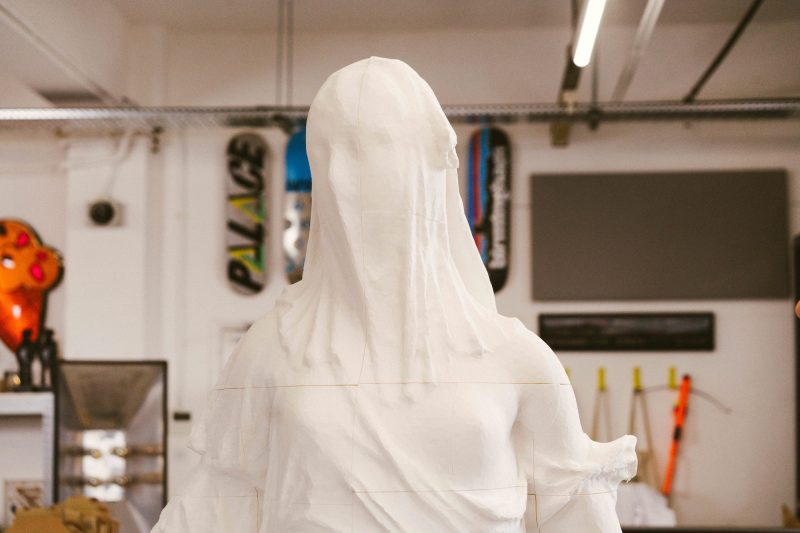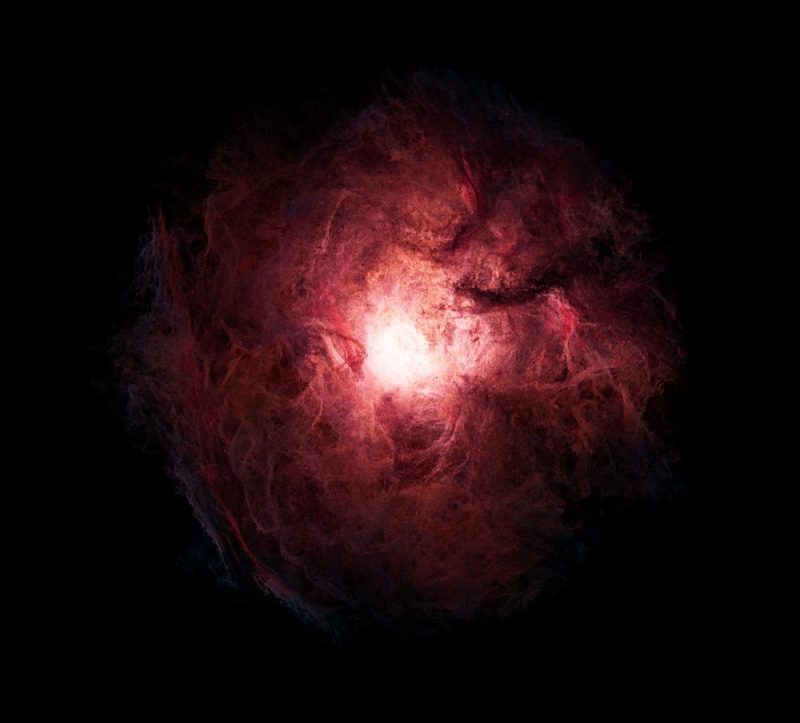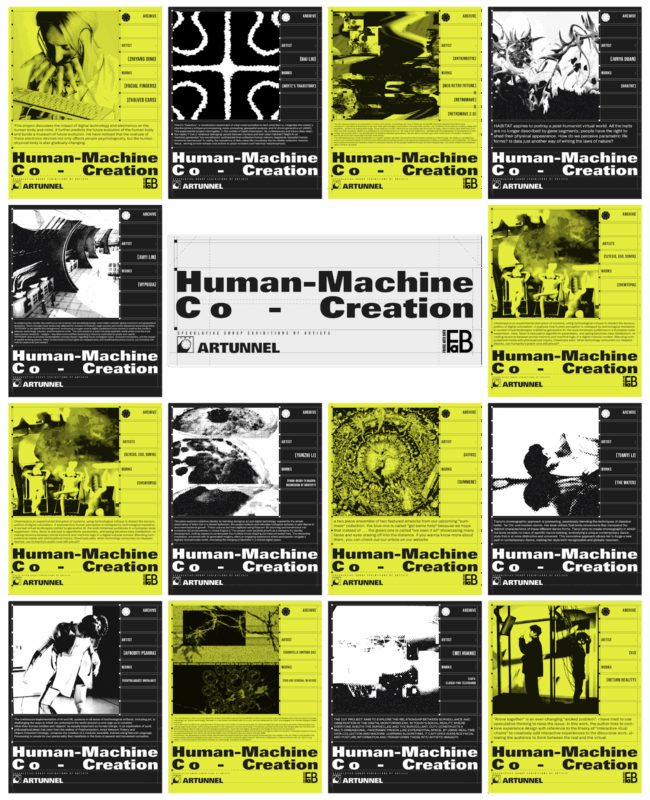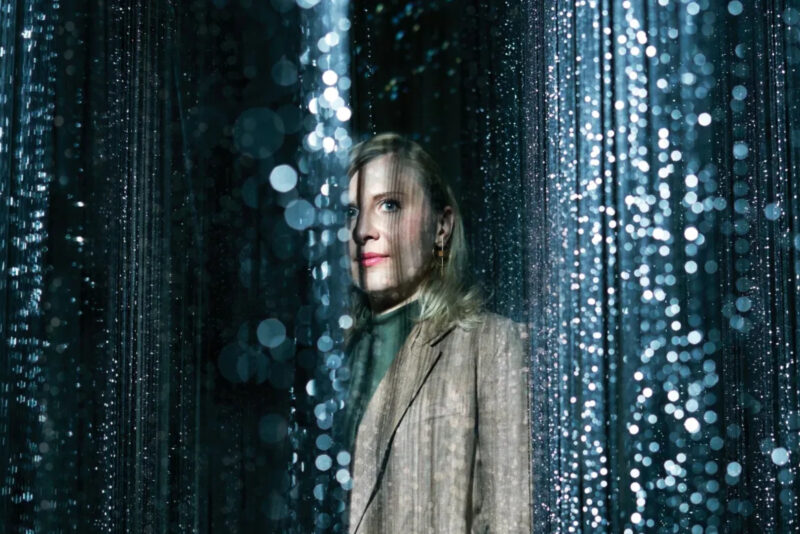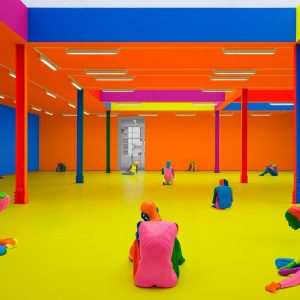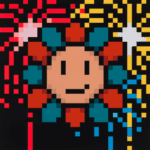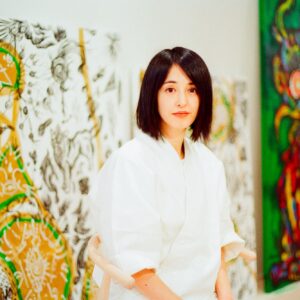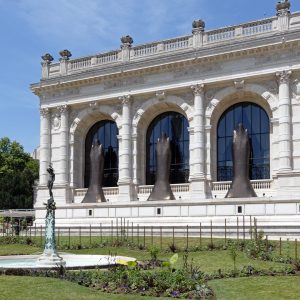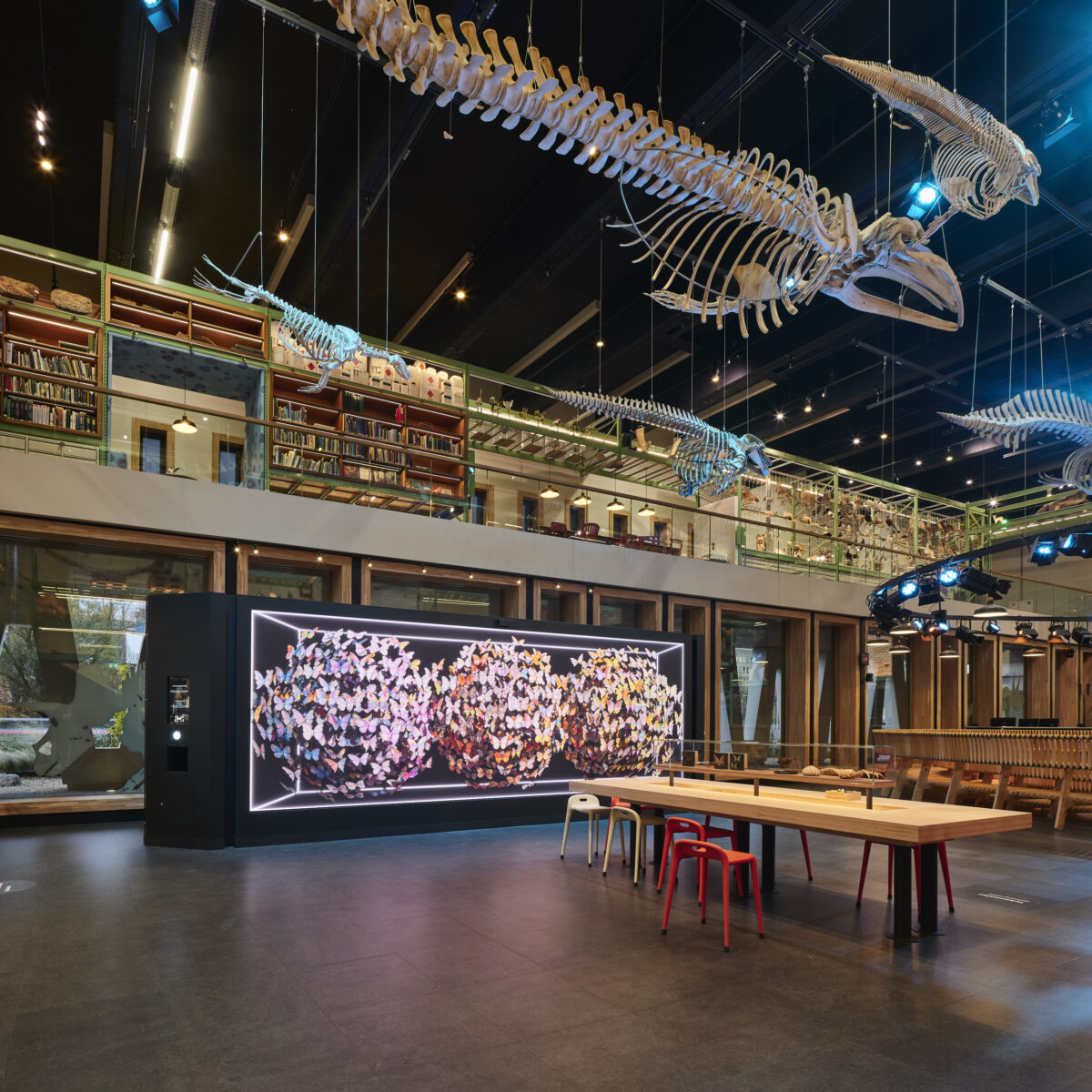
Halcyon present a new interactive work by British artist Dominic Harris at Naturalis Biodiversity Center today Wednesday 27th November. Origins of Imagination fuses art, technology, and nature, inviting visitors of all ages to co-create a continuously evolving digital collection of butterflies—a recurring motif within Harris’s work.
With this latest work, Origins of Imagination, visitors are invited to design a butterfly and scan it into the artwork. The scanned design is ‘brought to life’ with AI, transforming into a realistic-looking butterfly, which flutters around a 6 by 2-meter-long digital environment. Each butterfly is totally individual, designed by the visitor.
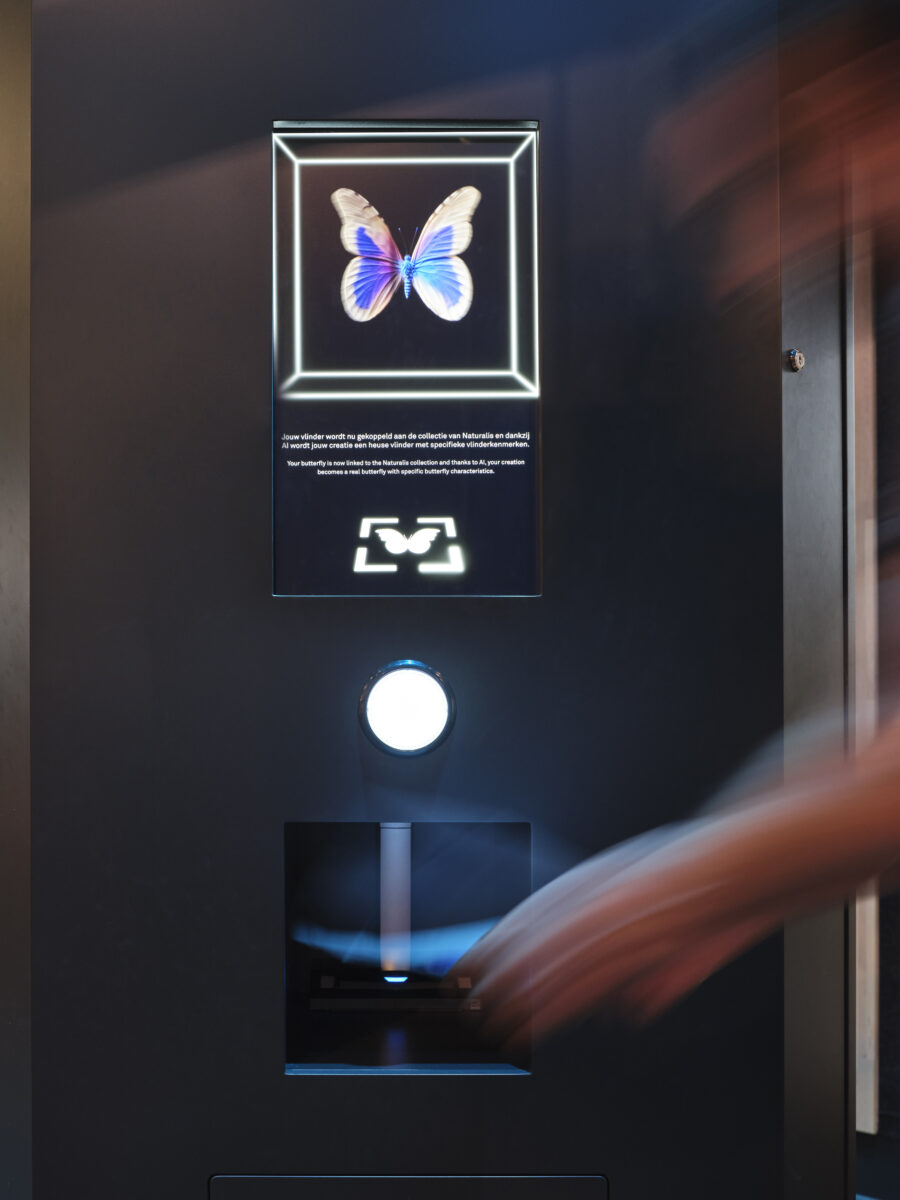
Inspired by the playful drawings made by Charles Darwin’s children on his original manuscript of ‘On the Origin of Species’, Harris captures the wonder and innocence of personal expression. This artwork invites both children and adults to explore the world of butterflies through their own creations, celebrating the timeless human capacity for imagination.
The evolving digital collection is presented as three large spheres set within a seemingly infinite digital space, each covered in butterflies. These spheres represent the multidimensional nature of colour and movement, organised by colour, hues, and brightness.
The artificial intelligence responsible for transforming the butterfly drawings has been trained on specimens from the extensive butterfly collection at Naturalis. Extending the experience beyond Naturalis, visitors can take their drawing with them and use a QR code to find their butterfly online as it becomes part of an ever-evolving digital collection.
At its core, the artwork reflects the principles of biological evolution. The butterflies’ transformations are symbolic of the processes of change, adaptation, and growth that occur in nature. Each new butterfly that is added to the collection contributes to the ongoing transformation of the artwork, ensuring it is never static— as with life itself.
With this artwork, Harris aims to inspire people to engage with scientific and artistic ideas. Accompanying educational materials help visitors make connections between their own creations and the broader concepts of evolution, creativity, and biodiversity.
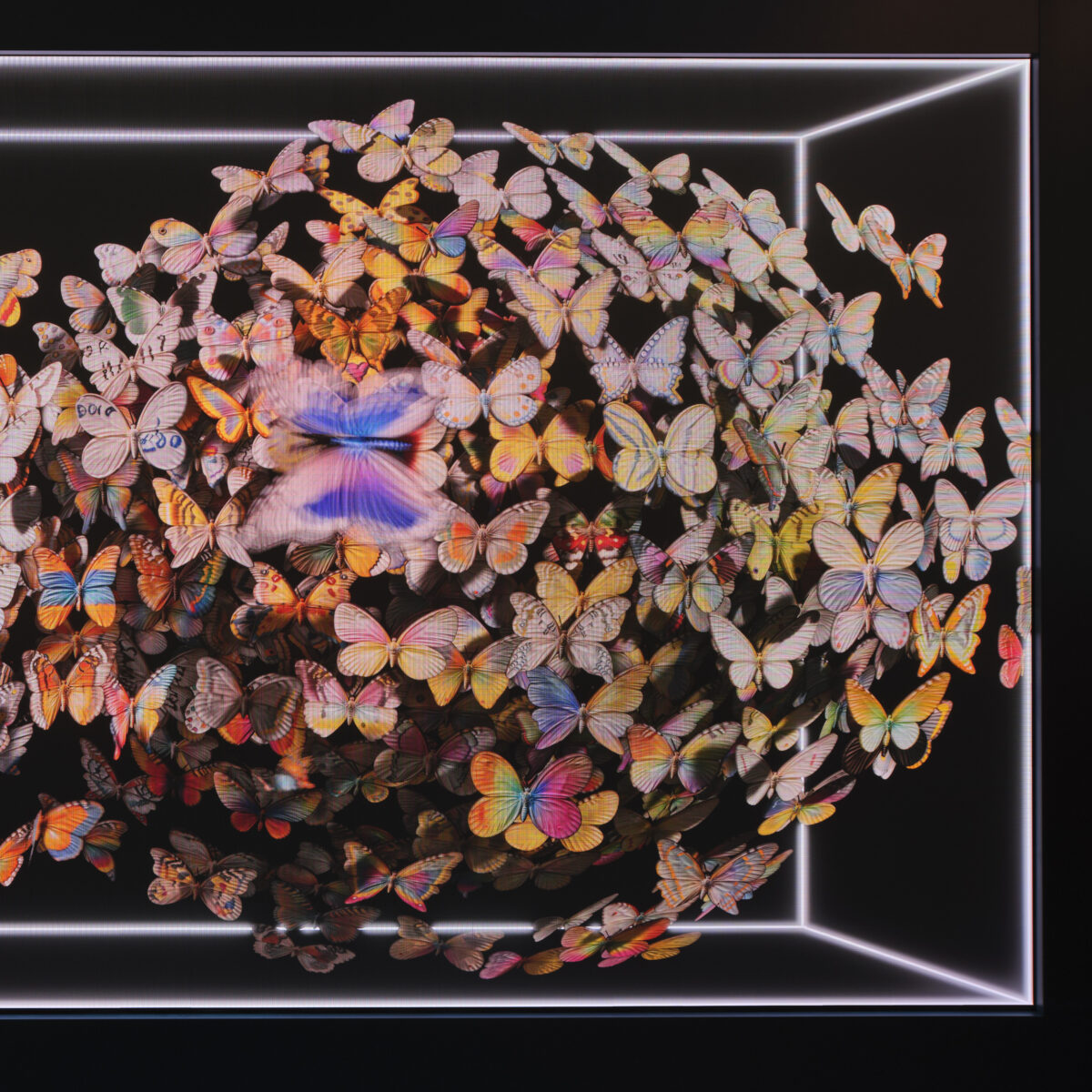
Dominic Harris says,
“This constantly evolving artwork is a celebration of how imagination can transform things. It mirrors the principles of evolution: each new contribution changes the collective artwork. Through co-creation in this living digital ecosystem, we’re not only exploring the boundaries of human creativity but also underscoring the importance of preserving nature’s delicate balance.”
Origins of Imagination has been placed in collaboration with Halcyon. Dedicated to enriching the lives and collections of every type of collector and art enthusiast, Halcyon specializes in placing innovative works of art at museums and in prominent public spaces around the world.
Paul Green, President and founder of Halcyon said:
‘Origins of Imagination is Dominic Harris’s most ambitious work to date – it shifts the role of the visitor from viewer to co-creator. We are so honoured to collaborate with Naturalis and the Moveo Art Collection on something that is as aesthetically breath-taking as it is thought-provoking- it’s truly visionary and we can’t wait for people to discover it.’
Origins of Imagination is on long-term loan from the Moveo Art Collection, a private art collection that initiated the project in collaboration with Halcyon.
Origins of Imagination is on display from today Wednesday 27th November in the freely accessible LiveScience hall on the ground floor of Naturalis Biodiversity Center.
For more information contact Halcyon at info@halcyongallery.com.
About the artist

Dominic Harris is a British artist renowned for his pioneering use of technology to create immersive, interactive experiences that explore the boundaries between the natural world and the digital realm. He has gained wide recognition for his innovative artworks featuring butterflies, with projects like “Baby Flutter” (2012) and “Metamorphosis” (2020), which showcase his meticulous attention to detail and fascination with the themes of transformation, nature, and human interaction.
Harris studied architecture at The Bartlett School of Architecture in London, where he developed a deep understanding of spatial design and immersive environments. This architectural background informs his artistic practice, allowing him to create works that engage viewers in both physical and emotional ways. Since founding his own studio, Harris has pushed the boundaries of contemporary art, merging art, code, and technology into seamless, visually stunning digital experiences.
Known for using cutting-edge technology, including motion sensors, AI, and hand-crafted digital elements, Harris’s artworks invite audiences to interact with and influence his creations. His works have been exhibited globally, and he has worked with prestigious institutions like the Halcyon Gallery. Through projects like “Origins of Imagination,” Harris continues to inspire new ways of thinking about the relationship between art, technology, and the natural world, inviting viewers of all ages to explore the transformative potential of imagination.
About
Naturalis Biodiversity Center is the Dutch national research institute for biodiversity. The institute is based in Leiden and hosts over 160 researchers. Naturalis closely collaborates with many universities, research institutes, industry, and government. With a collection of over 43 million specimens – one of the world’s largest natural history collections – and state-of-the-art research facilities, Naturalis offers an (inter)national research infrastructure for species identification, and monitoring & understanding of biodiversity. The museum welcomes more than 500,000 visitors per year.
